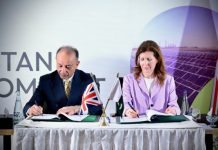By Asad Cheema
ISLAMABAD: The government has finalised a China-centric and tradable sectors-focused three-year economic growth strategy to achieve an average growth rate of 5.9% and per capita income of over $2,100 by 2025.
The Planning Commission has shared the broader contours of the draft economic growth strategy with Prime Minister Imran Khan. The draft strategy will now be presented before the National Economic Council (NEC) next month to seek its in-principle approval. The growth strategy has been finalised towards the end of the fourth year of the rule of the PTI government and would be launched from the start of the next fiscal year — the last year of Imran Khan’s government.
The plan seeks to achieve sustainable growth by focusing on economic relations with China and the sectors with a competitive advantage.
The end objective will be having average 5.9% economic growth rate for 2022-25 period and increasing per capita income from current $1,638 to over $2,100.
The exports are also targeted to grow to $56 billion by 2025.
The strategy suggests that the growth will be led by the industrial sector, which is projected to grow from the average of 3.2% of last five years to an average of 7% by 2025.
The services sector will be the second growth puller followed by the agricultural sector, according to the draft strategy.
The pursuit of quantitative economic targets is being replaced by policy nudges to ensure a more equitable and sustained growth trajectory, according to the planning ministry.
However, during a meeting with the prime minister, Finance Minister Shaukat Tarin expressed certain reservations over the strategy, mainly about excluding his ministry from the planning process, sources told
Under the rules of business, it is the responsibility of the planning and development ministry to provide economic policy guidelines to the country.
The sources added that Planning and Development Minister Asad Umar was of the view that giving economic direction was the prerogative of his ministry.
The country’s growth prospects are severely undermined because of the lack of planning, inconsistent policies and the dominant role of the international financial institutions in economic policymaking and its monitoring.
The new strategy also talks about a gradual increase in investment-to-GDP ratio to 21% by 2025 and restricting the current account deficit to 2.8% of the GDP in that year.
The main thrust of the strategy is that the growth engines must be tradable, globally competitive, job intensive and help the country move to a higher value-added structure of the economy.
Fiscal incentives need to be redesigned and made contingent upon eligibility criteria and export performance with sunset clauses. However, the government does not have a plan to withdraw the existing untargeted subsidies availed by textile exporters.
The government has decided that it should take full benefit of the country’s relations with China and gain the share of higher value-added products in its import market.
The planning ministry’s working suggested that China offered a $2.36 trillion total import market size, which the country should utilise by having a greater share in Chinese imports than the rest of the world.
The working for the strategy showed that there was no overlap between Pakistan’s top 100 exports to China and the top 100 imports of China from non- Organisation for Economic Cooperation and Development (OECD) countries.
If Pakistan could bag a 5% of this import market, the country’s exports to China alone can increased by $43 billion.
However, Pakistan exported just 680 products to China worth a mere $2.1 billion in 2020, according to the planning ministry.
The products granted zero duties under the free trade agreement (FTA) between the two countries amount to $35 billion. However, Pakistan only exported products worth $743 million to China.
Pakistan has not even leveraged the existing FTA and 176 items granted zero duties were not even exported by the country in 2020.
The figures speak volumes about the inefficiency of Pakistani exporters and the commerce ministry.
Until Pakistan changes its production structure, it will be unable to exploit the export potential that China’s import market presents, according to the planning ministry.
The draft strategy will be further improved after receiving inputs from other stakeholders.
Industries Minister Khusro Bakhtyar has promised to soon finalise the industrial policy in line with the new growth strategy.
It has been decided that after consultations with the provincial governments, the final draft of the growth strategy will be submitted to the NEC in its next meeting likely to take place in May for approval and national roll out by June.
The government has decided to replace the traditional five-year planning cycle with the three-year strategy to cater to the fast evolving global economic developments.
The planning ministry is of the view that the pace of economic growth rate has been on decline and will not recover until the country undertakes fundamental reforms.
For the current fiscal year, the government has targeted to achieve 4.8% growth rate. However, the International Monetary Fund (IMF) and the State Bank of Pakistan (SBP) have projected a growth rate between 4% and 4.5%.






